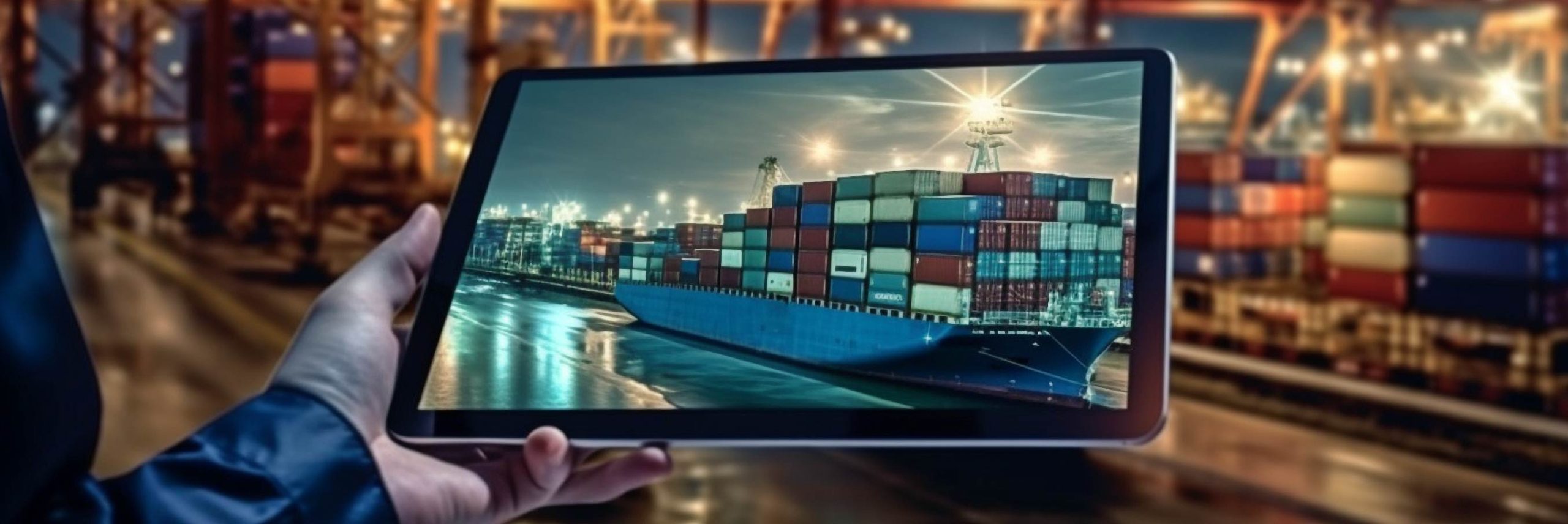
17 Jul Thriving in the age of data and digital transformation for ports
Imagine a scene straight out of a logistical nightmare: a colossal container ship adrift at sea, unable to dock. The reason? Lost paperwork. In today’s hyper-connected world, such an archaic scenario seems unthinkable. Yet, many ports still struggle with outdated systems, leaving them vulnerable in the ever-churning ocean of global trade.
The urgency of the situation is clear. The answer lies in a digital transformation – a complete overhaul of port operations using data and technology. This is not just about efficiency; it is about survival. According to a McKinsey report, global port traffic is expected to reach 35 billion tons by 2030. Without digital solutions, ports risk becoming bottlenecks, crippling supply chains, and hindering economic growth.
Data: The untapped treasure
Ports are treasure troves of data. Every container, truck movement, and interaction between shipping lines and terminal operators generates valuable information. However, much of this data remains siloed, unanalysed, and unavailable, hindering efficiency on multiple levels.
Imagine a dock management system integrating real-time data on container location, yard capacity, and equipment availability. This empowers ports to optimise yard layouts, prioritise cargo movement, and reduce congestion. Similarly, a Port Community System (PCS) can streamline the entire cargo lifecycle, from pre-arrival documentation to customs clearance. This not only reduces processing time but improves transparency and communication throughout the supply chain.
A global race with regional nuances
The need for digital transformation in ports is universal. However, the specific challenges and solutions will vary across regions. Developed ports might focus on advanced automation and AI-powered decision-making. In contrast, developing ports might prioritise streamlining basic processes and integrating legacy systems with modern solutions.
For example, a port in Rotterdam might leverage automated guided vehicles (AGVs) for container handling. In contrast, a port in Africa might prioritise implementing a user-friendly PCS to improve communication within stakeholders. Regardless of the technology adopted, the focus should be on creating a data-driven ecosystem that fosters collaboration and optimises operations.
Building a digital future: From necessity to opportunity
The benefits of digital transformation extend far beyond increased efficiency. Ports that embrace data can:
• Enhance security: Real-time tracking of cargo and access control systems improve security measures and reduce theft risk.
• Boost sustainability: Data-driven insights can help optimise energy consumption and reduce emissions, contributing to a greener port ecosystem.
• Attract new business: Efficient, transparent ports become magnets for shipping lines seeking reliable and predictable services.
• Data: Real-time data, including congestion, cargo flows, vessel activity, and equipment performance, is now available to ports and port authorities.
Charting a course for success
The time for ports to remain anchored in outdated practices is over. The winds of change are blowing, and the tide is rising. By embracing data and digital tools, ports can transform from passive cargo handlers into active logistics hubs, ensuring a smooth and efficient journey for global trade. The future of ports is not just about navigating physical waters but about mastering the digital seas of data. So, set sail with confidence, embrace the digital revolution, and chart a course for success.

